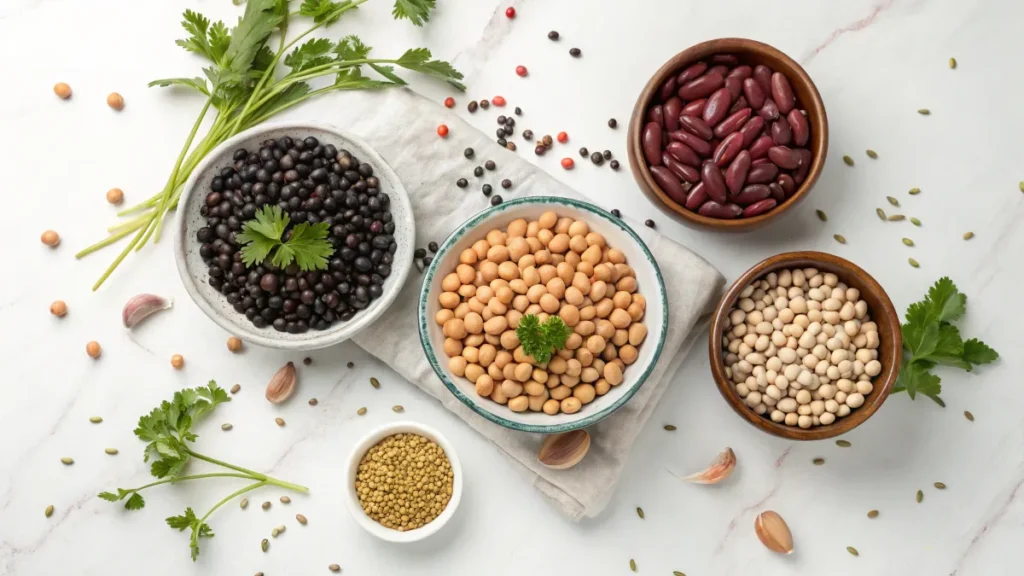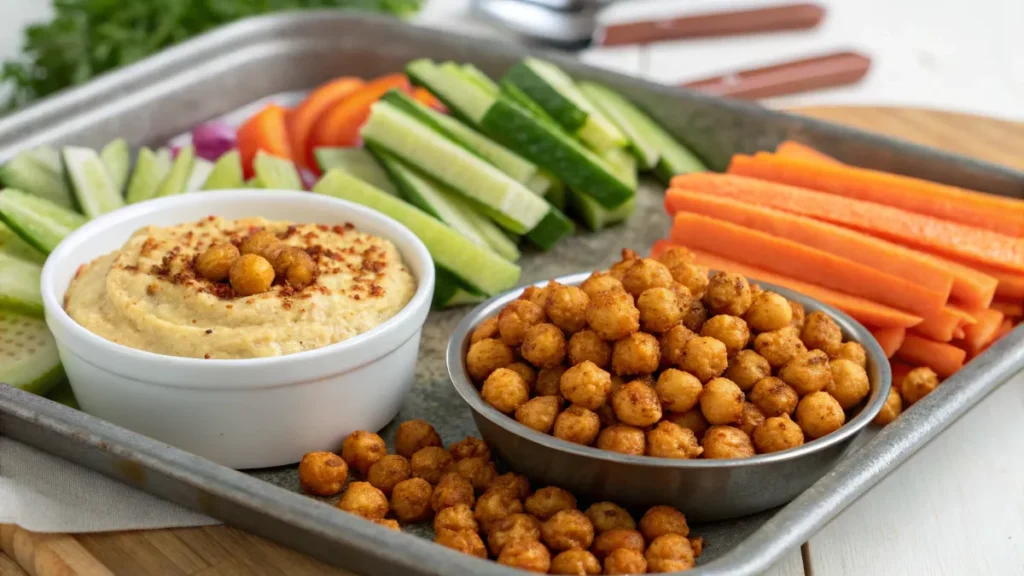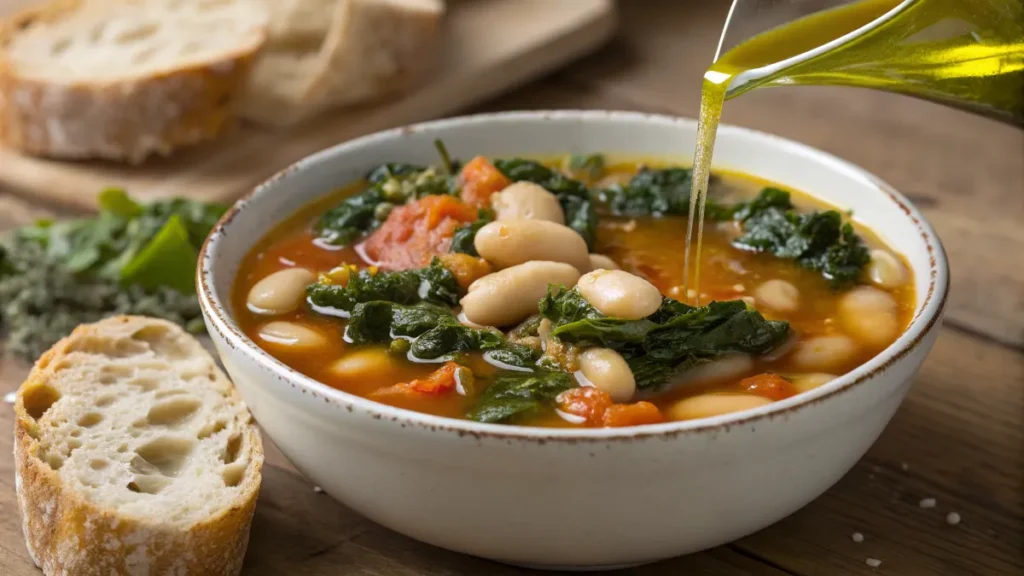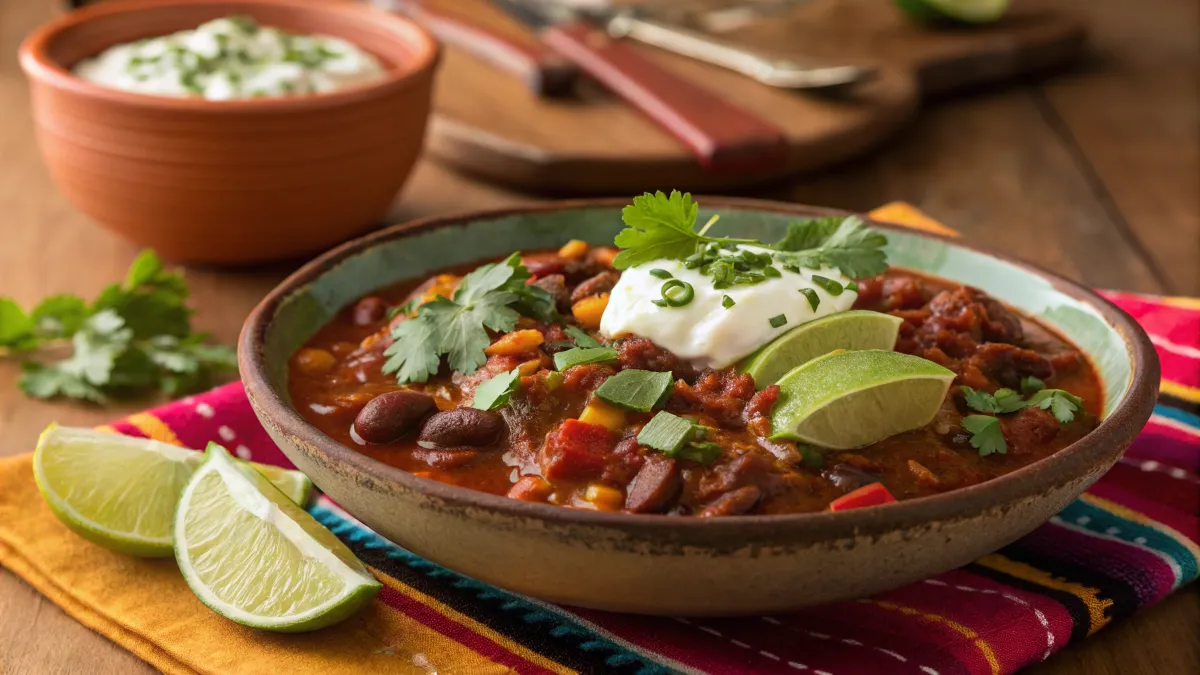Beans are some of the most versatile ingredients in cooking. From hearty stews to refreshing salads, bean dishes are a staple in many cuisines worldwide. Not only are beans delicious, but they’re also packed with nutrients, making them an excellent choice for healthy meals. This guide will walk you through everything you need to know about bean dish types of beans, easy recipes, creative ways to cook, and tips for perfection. Let’s dive into the flavorful world of beans!
Bean Dishes
What Are Bean Dishes?
Beans are the unsung heroes of the kitchen. Found in nearly every culture, they’re used to create comforting soups, savory sides, and filling main courses. What makes beans so special is their versatility they absorb flavors beautifully and pair well with a wide variety of ingredients. From Latin American feijoada to Mediterranean hummus, bean dishes are a global phenomenon.
Beans aren’t just about taste they’re also a budget-friendly way to feed a family. A simple pot of beans can be transformed into countless meals, making them a favorite among home cooks.
Health Benefits of Beans
Beans aren’t just tasty they’re nutritional powerhouses! They’re packed with protein, fiber, and essential vitamins and minerals. Here are some key benefits:
- Rich in protein: A great plant-based option for vegetarians and vegans.
- High in fiber: Supports digestion and keeps you feeling full longer.
- Loaded with nutrients: Beans contain iron, magnesium, potassium, and folate, all of which contribute to a healthy diet.
What’s more, eating beans regularly can help lower cholesterol, maintain blood sugar levels, and even reduce the risk of heart disease. No wonder bean dishes are so popular in healthy eating plans!
Why You Should Add More Beans to Your Meals
If you’re looking to add variety to your diet, beans are a perfect choice. They’re affordable, easy to store, and simple to cook. Plus, they’re a fantastic way to reduce meat consumption without sacrificing protein.
Whether you’re new to cooking with beans or a seasoned pro, there’s always something new to discover. In the next section, we’ll explore the most common types of beans and how to use them in your favorite recipes.
Popular Types of Beans Used in Cooking

Commonly Used Beans
Beans come in many varieties, each with its unique flavor, texture, and culinary uses. Here are some of the most popular types of beans you’ll find in bean dishes around the world:
- Kidney Beans: Known for their firm texture and slightly sweet flavor, kidney beans are perfect for hearty chili or curry dishes. Check out this classic chili recipe from Food Network for inspiration.
- Black Beans: These small, shiny beans are a staple in Latin American cuisine. Use them in soups, burritos, or salads like this zesty black bean salad from Taste of Home.
- Chickpeas (Garbanzo Beans): Creamy and nutty, chickpeas are famous for their role in hummus. Try this easy hummus recipe from Minimalist Baker for a quick and delicious appetizer.
- Lentils: Technically a legume, lentils are a versatile ingredient in soups, stews, and curries. They’re also packed with protein and cook faster than most beans.
Canned vs. Dried Beans
When it comes to cooking, choosing between canned and dried beans often depends on convenience and preference. Here’s a quick comparison:
- Canned Beans: Pre-cooked and ready to use, canned beans are perfect for quick meals. Look for low-sodium options to keep dishes healthy. For example, you can make a fast black bean soup using this 15-minute recipe from Delish.
- Dried Beans: While they take longer to prepare, dried beans often have a better texture and flavor. Soaking them overnight and cooking them in a slow cooker can make the process easier. Learn how to cook dried beans perfectly with tips from food network.
Easy Bean Dishes for Beginners
Simple Bean Soups and Stews
If you’re new to cooking with beans, soups and stews are an excellent place to start. They’re forgiving, flavorful, and perfect for experimenting. Some beginner-friendly ideas include:
- Classic Lentil Soup: Packed with vegetables and a touch of spice, lentil soup is as comforting as it gets.
- Hearty Bean Stew: Combine kidney beans, tomatoes, and your favorite vegetables for a filling meal.
Quick Bean Salads
Bean salads are perfect for quick meals or side dishes. They’re easy to make, packed with nutrients, and great for meal prep. A few ideas include:
- Three-Bean Salad: A mix of kidney beans, chickpeas, and green beans with a tangy vinaigrette. Here’s a classic recipe from AllRecipes to try.
- Mediterranean Chickpea Salad: Combine chickpeas with cucumbers, tomatoes, and feta cheese for a refreshing dish.
Creative Ways to Cook with Beans
Bean-Based Snacks and Appetizers

Beans aren’t just for soups and main courses they also make fantastic snacks and appetizers. Here are some simple yet creative ideas to try:
- Homemade Hummus: Chickpeas, tahini, garlic, and olive oil blend into a creamy dip. Pair it with fresh veggies or pita bread for a quick snack.
- Crispy Roasted Chickpeas: Roast chickpeas with spices like smoked paprika or cumin for a crunchy, high-protein snack.
Main Course Ideas
Beans are the star ingredient in many satisfying main courses. Whether you prefer vegetarian or meat-based meals, there’s something for everyone:
- Vegan Bean Burgers: Blend black beans, oats, and spices to create a hearty, meat-free patty.
- White Bean and Chicken Chili: A lighter take on classic chili, this dish combines white beans, shredded chicken, and a creamy base.
For more bean-based recipes, explore other creative ideas at EveryTastes.
Bean Dishes Across the World
Latin American Bean Dishes
Latin American cuisine is rich in bean dishes. Staples like refried beans and feijoada are flavorful and easy to make:
- Refried Beans: Perfect as a side dish or taco filling, refried beans are made with pinto or black beans cooked with onions and spices.
- Feijoada: This Brazilian black bean stew, often made with pork, is a hearty dish perfect for special occasions.
Asian Bean Creations
Asian cuisines highlight the versatility of soybeans and mung beans. Popular options include:
- Soybean Stir-Fry: Fresh soybeans sautéed with garlic, ginger, and a splash of soy sauce.
- Mung Bean Pancakes: Korean mung bean pancakes are crispy, savory treats made with blended beans and vegetables.
European and Mediterranean Bean Recipes
In Mediterranean cooking, beans often take center stage in soups and dips:
- Tuscan Bean Soup: A comforting Italian soup featuring cannellini beans, kale, and a drizzle of olive oil.
- Greek Fava Dip: Made from yellow split peas, this creamy dip is a great alternative to hummus.
For more global recipe ideas, explore other delicious creations on EveryTastes.
Tips for Cooking Beans Perfectly
Avoiding Common Mistakes
Cooking beans can sometimes be tricky, especially for beginners. But with a few tips, you can make your bean dishes taste amazing every time. Here are some common pitfalls to avoid:
- Skipping the Soak: For dried beans, soaking them overnight reduces cooking time and helps with digestion. If you’re in a rush, use the quick soak method by boiling beans for two minutes, then letting them sit for an hour.
- Overcooking or Undercooking: Keep an eye on your beans as they simmer. Overcooked beans turn mushy, while undercooked beans remain tough. Aim for a tender texture that still holds its shape.
- Adding Salt Too Early: Salt can make beans tougher during cooking. It’s best to add salt toward the end of the cooking process.
Enhancing Flavor
Beans are like sponges they soak up whatever flavors you add. To elevate your bean dishes, experiment with these ideas:
- Use Aromatics: Add onions, garlic, bay leaves, and herbs like thyme to your cooking water. These infuse the beans with rich, earthy flavors.
- Incorporate Spices: Cumin, paprika, turmeric, and chili powder work wonders in bean recipes. Adjust the spices to match the cuisine you’re making.
- Finish with Acidity: A splash of vinegar or a squeeze of lemon at the end of cooking brightens the flavor of bean-based dishes.
By paying attention to these small details, you’ll achieve perfectly cooked and flavorful beans every time.
Table: Nutritional Comparison of Common Beans

Beans are not just delicious they’re also incredibly nutritious. Below is a quick comparison of the most common types of beans and their key nutritional benefits.
| Bean Type | Protein (g) | Fiber (g) | Calories (per 100g) | Notable Nutrients |
|---|---|---|---|---|
| Kidney Beans | 8.7 | 6.4 | 127 | Iron, Folate |
| Black Beans | 8.9 | 7.0 | 132 | Magnesium, Potassium |
| Chickpeas | 8.3 | 7.6 | 164 | Vitamin B6, Zinc |
| Lentils | 9.0 | 7.9 | 116 | Copper, Manganese |
Why These Nutrients Matter
- Protein: Essential for muscle repair and overall health, beans are a great alternative to meat.
- Fiber: Supports digestion and keeps you feeling full longer.
- Vitamins and Minerals: Beans are packed with iron for energy, folate for cell repair, and magnesium for heart health.
Adding beans to your diet is one of the easiest ways to boost your nutrient intake. Whether you’re making soups, salads, or stews, there’s no shortage of ways to enjoy these nutritional powerhouses in your bean dishes.
FAQs About Bean Dishes
Yes, you can freeze cooked beans, and it’s a great way to save time. To do this, cook the beans until tender, then drain and cool them. Place the beans in airtight containers or resealable freezer bags, making sure to remove as much air as possible. Label the bags with the date and store them in the freezer for up to three months.
When ready to use, thaw the beans in the refrigerator overnight or add them directly to soups and stews while cooking. This method ensures you always have beans on hand for your favorite bean dishes.
Beans are high in fiber and certain carbohydrates, which can cause gas for some people. However, there are simple steps to reduce this effect:
Soak Dried Beans: Soaking beans overnight and discarding the soaking water removes some of the compounds that cause gas.
Use Spices: Adding spices like ginger, cumin, or fennel during cooking can aid digestion.
Start Small: If you’re new to eating beans, introduce them gradually into your diet to allow your body to adjust.
With these tips, you can enjoy bean dishes without discomfort.
The best spices depend on the flavor profile you’re aiming for. Here are a few popular options: For Mexican Dishes: Chili powder, cumin, oregano, and smoked paprika. For Mediterranean Dishes: Garlic, rosemary, thyme, and parsley. For Indian Dishes: Turmeric, coriander, garam masala, and curry leaves.
Experimenting with spices is the key to creating flavorful bean dishes that suit your taste preferences.
For more kitchen inspiration, check out Alice Springs Chicken Recipe – A Savory Delight
Final Tips
Beans are a staple in kitchens around the world, and for good reason. They’re versatile, affordable, and packed with nutrients.
As you explore the world of bean dishes, don’t be afraid to experiment. Try different types of beans, mix and match spices, and incorporate beans into meals you already love. With a little creativity, you’ll never run out of delicious ideas.
Finally, remember that cooking beans from scratch allows you to control the texture and flavor. But if you’re short on time, canned beans can be just as convenient and tasty.
For more inspiration, revisit this guide whenever you need ideas. Beans truly are the ultimate kitchen hero, offering endless possibilities for nutritious and delicious meals.
How to Store Beans for Maximum Freshness
Proper storage ensures your beans retain their quality and flavor, whether you’re dealing with dried or cooked beans.
- Storing Dried Beans: Keep them in an airtight container in a cool, dark place. They last up to a year but are best used within six months for optimal flavor.
- Storing Cooked Beans: Refrigerate them in a sealed container for up to five days. Alternatively, freeze them as described in the FAQs section.
For more tips on preserving your ingredients, check out the detailed storage guide on EveryTastes.
Fun Facts About Beans
Beans have been a part of human diets for thousands of years. Here are a few fun facts you might not know:
- Beans were one of the first crops cultivated by humans, dating back to ancient Egypt.
- There are over 40,000 bean varieties worldwide, though only a fraction is cultivated for consumption.
- Beans are environmentally friendly, enriching the soil with nitrogen as they grow.
For more fun food insights, explore our article on sustainable cooking ideas.
Conclusion
Beans are a true gift to the culinary world, offering endless possibilities for meals that are both healthy and delicious. This guide has covered everything you need to know about bean dishes, from cooking tips to global recipes, nutritional benefits, and creative ideas. Whether you’re a beginner or an experienced cook, beans can transform your kitchen with their versatility and flavor.
Remember, experimenting with different types of beans and spices can lead to unique and memorable meals. So, grab a bag of beans and get cooking your next favorite dish might be just a pot away!
For more kitchen inspiration, check out the latest recipe ideas on EveryTastes.

